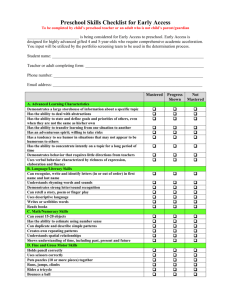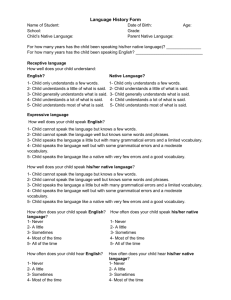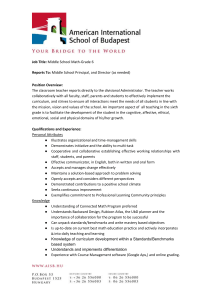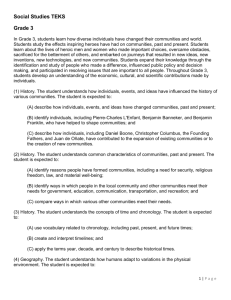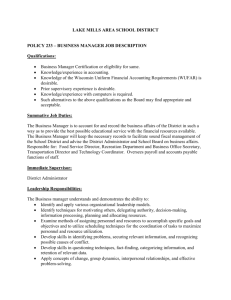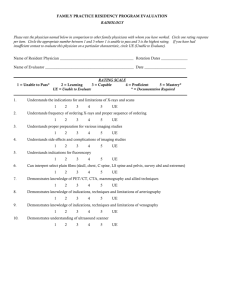Listening Benchmark Checklist
advertisement
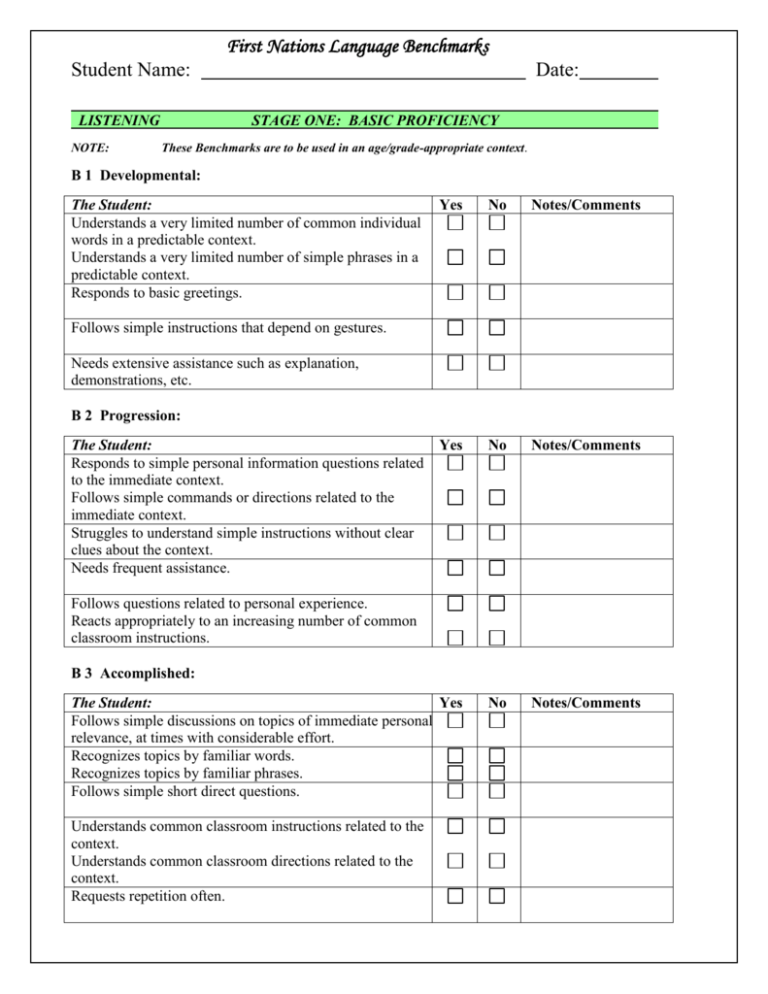
First Nations Language Benchmarks Student Name: LISTENING NOTE: Date: STAGE ONE: BASIC PROFICIENCY These Benchmarks are to be used in an age/grade-appropriate context. B 1 Developmental: The Student: Understands a very limited number of common individual words in a predictable context. Understands a very limited number of simple phrases in a predictable context. Responds to basic greetings. Yes No Notes/Comments Yes No Notes/Comments The Student: Yes Follows simple discussions on topics of immediate personal relevance, at times with considerable effort. Recognizes topics by familiar words. Recognizes topics by familiar phrases. Follows simple short direct questions. No Notes/Comments Follows simple instructions that depend on gestures. Needs extensive assistance such as explanation, demonstrations, etc. B 2 Progression: The Student: Responds to simple personal information questions related to the immediate context. Follows simple commands or directions related to the immediate context. Struggles to understand simple instructions without clear clues about the context. Needs frequent assistance. Follows questions related to personal experience. Reacts appropriately to an increasing number of common classroom instructions. B 3 Accomplished: Understands common classroom instructions related to the context. Understands common classroom directions related to the context. Requests repetition often. First Nations Language Benchmarks Student Name: LISTENING NOTE: Date: STAGE TWO: INTERMEDIATE PROFICIENCY These Benchmarks are to be used in an age/grade-appropriate context. I 1 Developmental: The Student: Yes Follows, with some effort, the gist of oral communication in moderately demanding situations. Understands direct questions about personal experience and familiar topics. Understands short sets of common daily instructions. Understands routine announcements. Understands a range of common vocabulary. No Notes/Comments Yes No Notes/Comments Yes No Notes/Comments Requests repetition frequently. I 2 Progression: The Student: Understands important details in discussions involving classroom activities. Understands main points in discussions involving home activities. Follows most discussions on familiar topics at normal rate of speech. Understands a range of common vocabulary. Understand short sets of instructions and directions. Sometimes requires slower speech, repetitions and rewording. I 3 Accomplished: The Student: Comprehends main points, details, and speaker’s purpose, in most common classroom context. Understands main points and details in most common discussions about home and family. Comprehends an expanded range of concrete language. Understands some abstract and conceptual language. Is beginning to determine mood, attitude, and feelings. Understands sufficient vocabulary and “common” expressions to follow stories and descriptions. Has difficulty following rapid speech by native speakers. First Nations Language Benchmarks Student Name: LISTENING NOTE: Date: STAGE THREE: ADVANCED PROFICIENCY These Benchmarks are to be used in an age/grade-appropriate context. A 1 Developmental: The Student: Yes Obtains information for important tasks by listening to 15 to 30-minute discussion in some demanding contexts of language use. Grasps the meaning of discussion in order to summarize key points and important details. May miss some details in a discussion and may become Lost. May have difficulty understanding verbal humour. May have difficulty understanding cultural references. No Notes/Comments Yes No Notes/Comments Yes No Notes/Comments A 2 Progression: The Student: Obtains information for important tasks by listening to 15 to 30-minute discussion in some demanding contexts of language use. Follows most discussions on topics of general interest, delivered at a normal rate of speed. Occasionally misses a topic shift or other transition. Understands a broad range of factual and expressive oral language in the classroom setting. Understands a broad range of factual and expressive oral language in the home settings. Sometimes has difficulty interpreting culturally based verbal humour, especially when spoken at a rapid rate. Has an adequate listening/interpreting skill to satisfy most school, social, and family-related situations. A 3 Accomplished: The Student: Competently and fluently interprets all spoken language in a broad variety of demanding contexts. Follows long stretches of oral discussion with complex language. Understands most stated and unstated information in a discussion. Critically evaluates most aspects of oral discussion.


